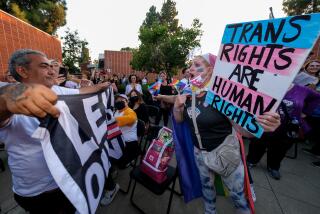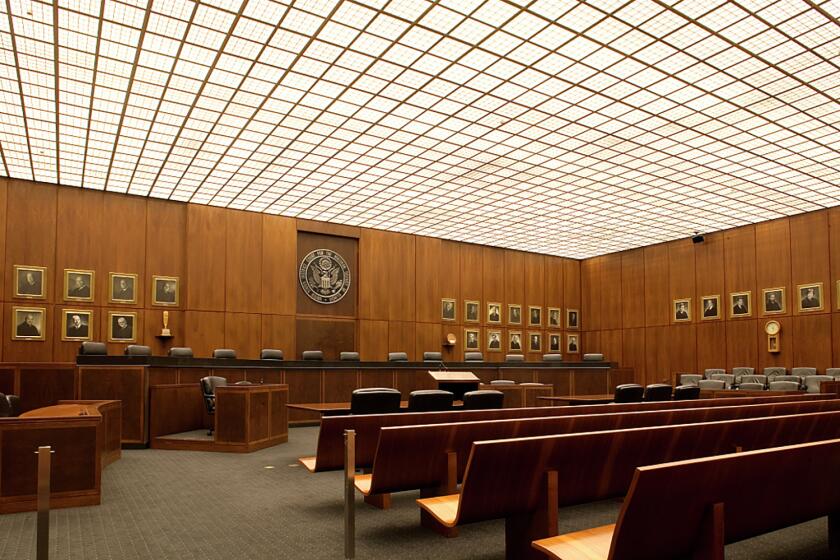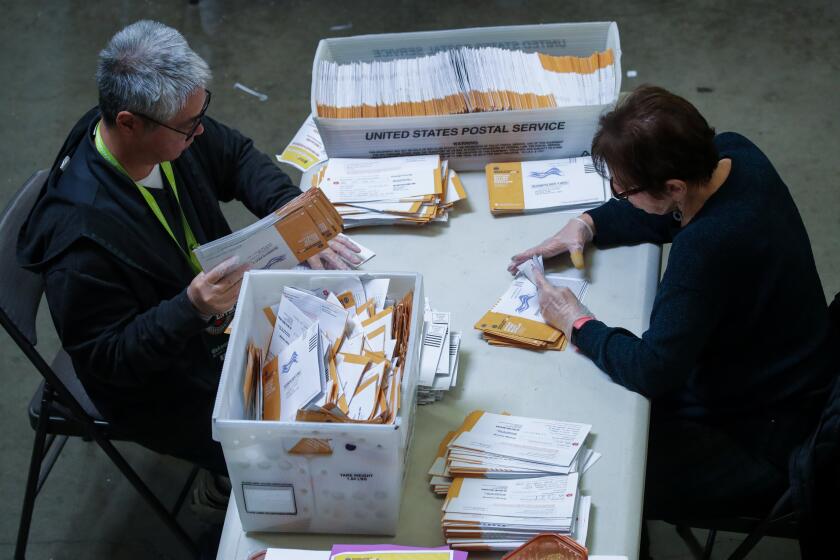Opinion: Can kids wear black armbands to school but not MAGA hats?

This week marks the 50th anniversary of Tinker vs. Des Moines School District, in which the Supreme Court ruled in favor of students who had been suspended for coming to school wearing black armbands to protest the Vietnam War.
In a clarion call for the 1st Amendment rights of non-adults, Justice Abe Fortas proclaimed for the majority that “it can hardly be argued that either students or teachers shed their constitutional rights to freedom of speech or expression at the schoolhouse gate.” Student speech could be suppressed, however, if it “materially disrupts classwork or involves substantial disorder or invasion of the rights of others.”
The ACLU rightly calls Tinker a landmark decision, but the ruling could be on shaky ground a half century later.
Unsurprisingly, some parents, teachers and school administrators have never accepted the idea that schoolkids have a constitutional right to express political opinions in the classroom.
But some current Supreme Court justices also seem uncomfortable with student free speech. Without overturning Tinker, the court has undermined it in subsequent cases, including its 2007 ruling in Morse vs. Frederick, also known as the “BONG HiTS 4 JESUS” case. That was the somewhat inscrutable message displayed on a banner unfurled by senior Joseph Frederick and his friends as they watched the relay of the Olympic torch on the street in front of their Juneau, Alaska, high school.
Writing for five justices, Chief Justice John G. Roberts Jr. said that the school’s decision to suspend Frederick wasn’t a violation of the boy’s free-speech rights because the school could have reasonably interpreted the “BONG HiTS” sign as an endorsement of illegal drug use.
One of the justices in the majority in the “BONG HiTS” case, Clarence Thomas, complained that the reasoning of Tinker “conflicted with the traditional understanding of the judiciary’s role in relation to public schooling.” But instead of cleanly overruling the decision, he noted, the court had repeatedly “scaled back” its protections. “In doing so,” he wrote, “we continue to distance ourselves from Tinker, but we neither overrule it nor offer an explanation of when it operates and when it does not.”
It’s possible that Thomas will persuade some of his colleagues that Tinker has to go. But even if the court doesn’t reverse the ruling, the cause of free speech for students seems to be losing support in society.
Perhaps it’s a trickle-down effect from the “rethinking” of free speech that has occurred on college campuses, where some students want to be kept “safe” from supposedly harmful speech. Partly it may reflect the divisiveness of the Trump presidency.
In 2017 a high school math teacher in the Cherokee County school district in Georgia resigned after being placed on leave after she asked two students to turn their “Make America Great Again” T-shirts inside out. She explained that her classroom was 30% minority and “all of these kids have the right to feel comfortable in my classroom.”
California got its own MAGA accessory case recently when a student at a Fresno school complained that her 1st Amendment rights were violated when she was told not to wear her “Make America Great Again” hat, which officials said was a violation of their policy against hats of all kinds — with one exception: hats featuring the school logo or school colors. (Apparently you can wear a hat celebrating school spirit but not saluting the president.)
It’s ironic that Tinker may be teetering at a time when, in other settings, children are being praised for speaking out on political issues. Consider the adulation showered on the survivors of the school shooting in Parkland, Fla., who have become gun-control activists. Or the flak Sen. Dianne Feinstein has taken for the way she received youngsters ages 7 to 16 who came to her office last week to lobby her to support the Green New Deal. (Feinstein has her defenders.)
Tinker was controversial in some circles when it was decided half a century ago, and Justice Hugo Black, otherwise a champion of free speech, anticipated Thomas in his dissent.
Black wrote: “It may be that the nation has outworn the old-fashioned slogan that ‘children are to be seen, not heard,’ but one may, I hope, be permitted to harbor the thought that taxpayers send children to school on the premise that, at their age, they need to learn, not teach.”
Black’s view may be making a comeback. But if we’re going to trample on Tinker and insist that students refrain from political speech — or “expressive conduct” such as wearing a hat with a message — the clampdown must be consistent.
Enter the Fray: First takes on the news of the minute »
Follow the Opinion section on Twitter @latimesopinion and Facebook
More to Read
A cure for the common opinion
Get thought-provoking perspectives with our weekly newsletter.
You may occasionally receive promotional content from the Los Angeles Times.







